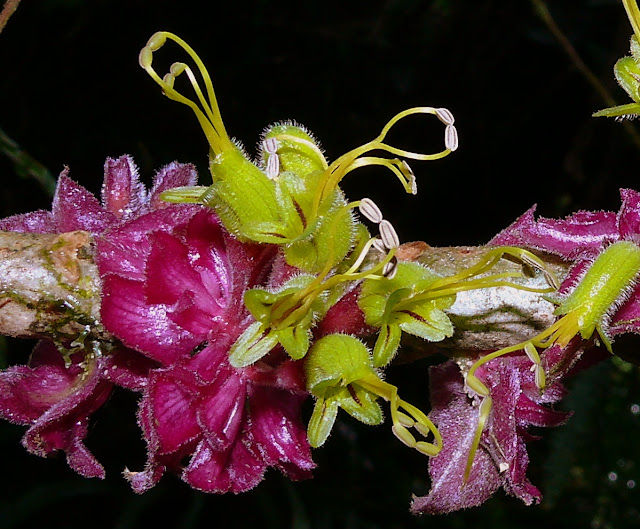Attempting to grow Agalmyla clarkei once again
 |
What you are looking at is a little known epiphytic gesneriad that is almost entirely unknown in cultivation, Agalmyla clarkei. I first saw this species in Oriental Mindoro some years ago, and was given two plants by a friend who used to live there. The plants lasted for only a few months, killed perhaps by the poor quality of the water I was forced to use. More on that here: https://jardinerongsunog.blogspot.com/2018/07/how-deforestation-decimated-my-plant.html
However, I am also aware of this species' ecological preferences, which is situated at elevations around 1000 m.- and I live in the lowlands. Still, I have plants from the higher altitudes that are doing well for me, kept going by some measures that somewhat negate the effects of the higher temperatures. But as for the Agalmyla, I never obtained the opportunity to try again. Until last Wednesday, May 1.
I visited a nursery specializing in some begonias, species orchids, Amorphophallus, Aeschynanthus, and other oddballs, when my eyes caught the sight of what I do think is A. clarkei. There was only one plant available, and it looked healthy and growing. And I'd be dumb to let the opportunity pass.
 |
| Serrated leaves with silvery fuzz. Attractive even when not in flower, I'm sure you will agree. |
I planted it in a hanging pot with pieces of bark as the main medium, along with some moss and leaf litter, and placed in a spot where it receives filtered light. Watering is carried out at least twice a day. It's fortuitous that I acquired the plant at the beginning of the rainy season; the story might be different if I found it by the end of February or March. It might be quite a hurdle maintaining it next dry season, but I have to concern myself with keeping it happy first.
Agalmyla clarkei occurs in Laguna and Quezon on Luzon; Mindoro, Panay, Leyte, and Biliran in the Visayas; and Mindanao. It's a widespread species but rarely observed. The flowering Agalmyla clarkei was photographed in situ by my friend Ravan Schneider. You can see more photos of this species here: http://www.phytoimages.siu.edu/cgi-bin/dol/dol_terminal.pl?taxon_name=Agalmyla_clarkei&rank=binomial



Comments
Post a Comment